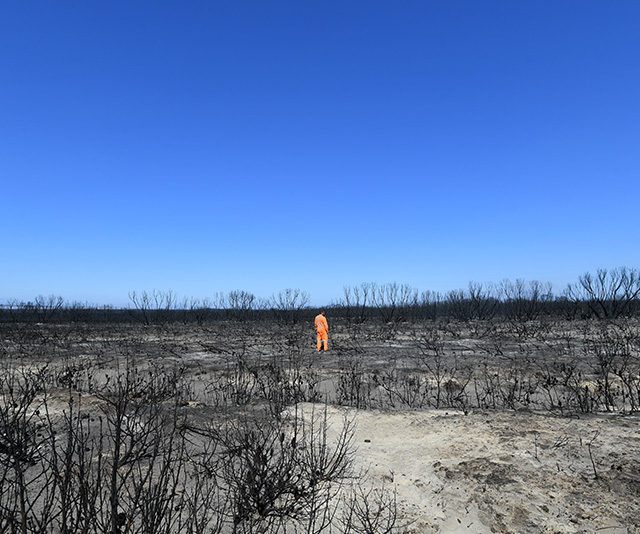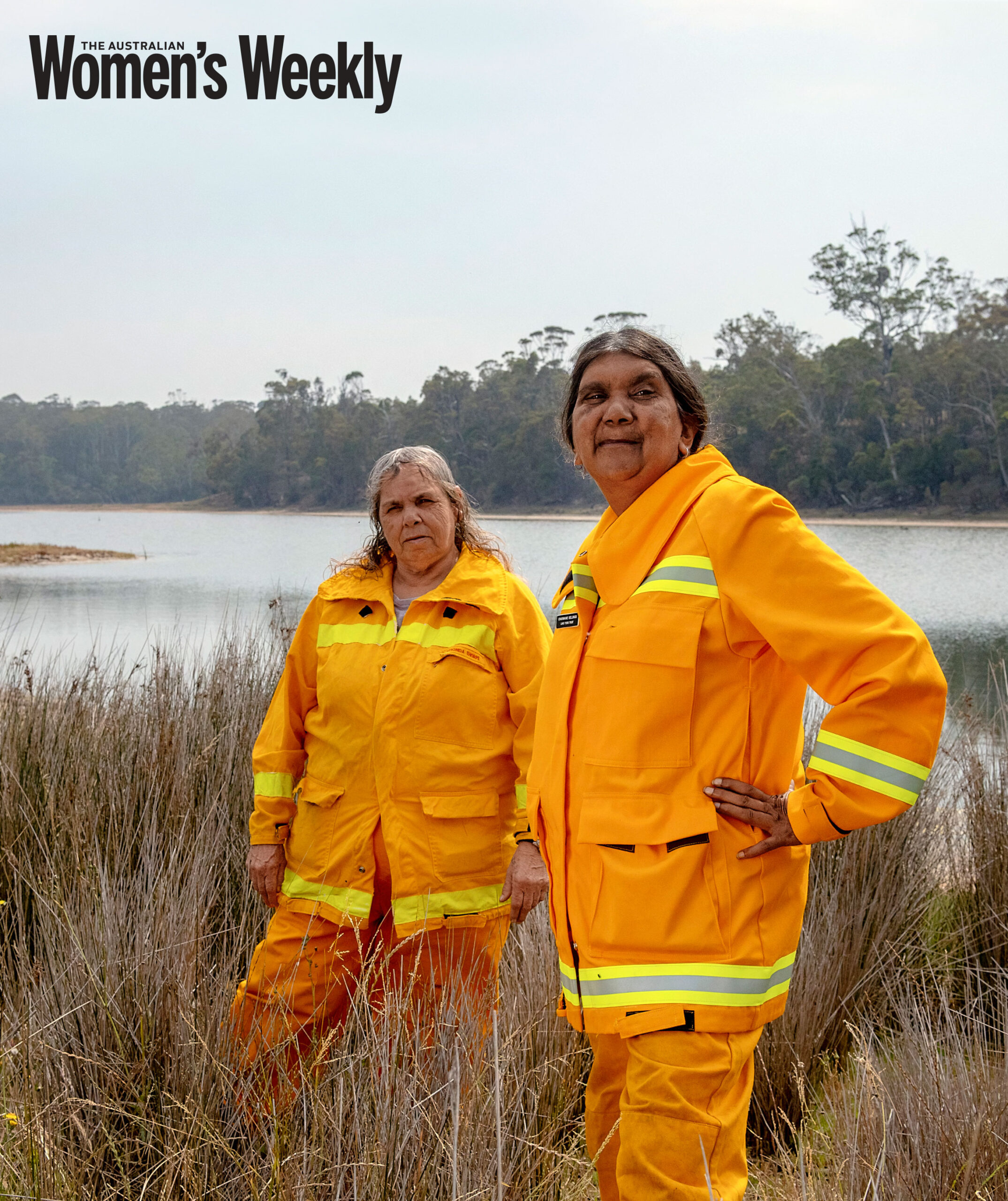Professor David Bowman is a pyrogeographer, one of the world’s leading fire experts. He has studied wildfire for more than 40 years but this fire season in Australia has made the hair on the back of his neck bristle.
It has frightened him.
“This is a nation-defining, historical event,” he says, with some urgency, from his post at The University of Tasmania.
“I said that in November. I knew it, even then, because the sorts of things that were happening in northern NSW were so extraordinary, so extreme. Extrapolating that, it was easy to see it moving down as a wave – it was inevitable.
“There has been terrible loss of wildlife, biodiversity, farmland and homes, but we have also been lucky. Both good fortune and the skill of the firefighters have ensured the loss of [human] life hasn’t been greater.”
However, David stresses that we can’t count on our luck holding unless we, as a nation, do some serious fire prevention and preparation.
“Something bigger than Black Saturday is in the cards,” he believes. “Maybe we will avoid it this year but I know the risk is sitting there.”
Dr Joelle Gergis, an award-winning climate scientist and author, believes this fire season has been not only nation-defining, but a signpost to our global future.
“As the planet continues to warm,” she says, “people all over the world are looking at Australia and looking at the summer that is unfolding, and we are now the poster child for climate change. We’re illustrating what it looks like when the planet warms.”
Australia is the most vulnerable nation in the developed world to climate change. Average Australian temperatures had risen by roughly 1.4°C above pre-industrial levels in the lead-up to this fire season (with the continent warming more rapidly than the global average of 1.1°C).
The best scientific modelling suggests that, beyond a rise of 2°C, the impacts on our climate and ecosystems could be irreversible. Yet Joelle believes it may still be possible to put the brakes on climate change.
“When we have more greenhouse gas in the atmosphere, there is an increase in global temperatures,” she explains. “That’s why climate scientists, not just here but all over the world, are calling for a reduction in emissions. The first thing we need to do is emissions reduction, and the second thing is adaptation.”
Naomi Brown is the former CEO of the Australasian Fire & Emergency Service Authorities Council, a board member of the National Aerial Firefighting Centre and one of the emergency leaders who last year requested a meeting with the Prime Minister to warn of the risk of a catastrophic fire season. She too believes we must be better prepared.
“All the fire chiefs could see this was ready to happen,” she tells The Weekly from her home in Perth.
“Even so, we were shocked. The word unprecedented gets bandied about a lot but these fires really were unprecedented. Their size and ferocity and intensity were staggering. Now there needs to be some very hard thinking done about the future.
“In the short to medium term, we need to invest in more research into how we can best deal with these fires. We need to look at the sustainability of volunteerism – can we expect volunteers to risk their lives day after day all spring and summer long? We need to invest in more aerial equipment. We need to investigate the way hazard reduction burns are done and look into other methods of fire mitigation.”

A firefighter surveys the damage on Kangaroo Island.
(Credit: AAP)David believes we need a greater diversity of weapons in our arsenal to prepare for future fire seasons.
“What frustrates me is just framing this as a debate about prescribed burning,” he says. “It’s a little bit simplistic and we’re dealing with a really complicated problem. Fuel-reduction burning doesn’t stop fires, it changes their behaviour. It can reduce their intensity, which gives firefighters increased options.”
But prescribed or hazard-reduction burning is only possible in certain landscapes and in very particular weather conditions. It is labour and equipment-intensive, so it’s expensive.
And, David says, it has “a sliding scale of benefit”. So it’s been found to be a huge help in cooler weather and less intense fires but “when the weather’s crazy and catastrophic, there’s no benefit at all.”
David’s fire prevention arsenal would include prescribed burning but it would also include better town planning and building design, “and retrofitting existing houses to withstand ember storms. We could also look at using water more wisely,” he says.
“Towns have so much wastewater. We could recycle that to create green fire breaks and buffer zones with less flammable plants on the edges of cities and towns. We could plough out some areas before the fire season. In parks and bushland, it is important to thin the understorey. We could use brush cutters or animals like goats to eat down weeds and brambles. There are so many very practical things we could do.”
David is also a proponent of Indigenous cultural burning. Two houses in the Hunter Valley were reported saved from the fierce Gospers Mountain fire this season by areas that had been culturally burned around them. In the devastating Tathra fire nearly two years earlier, the flames sidestepped the local Indigenous community, where cultural burning was as regular practice.
READ NEXT: Meet the all-female Indigenous fire crew protecting community, family and sacred land

Indigeneous firefighters Charmaine and Rhonda are part of an all-female Indigenous firefighting crew.
(Credit: Jessica Shapiro/The Australian Women’s Weekly)Lauren Tynan is a Trawlwulwuy woman from Tebrakunna country in northeast Tasmania but she has lived most of her life in NSW. She has a PhD in the works that investigates cultural burning and she is a founding member of Koori Country Firesticks, the organisation responsible for the burning around those Hunter Valley homes.
Cultural burning, she says, is cooler and slower than hazard-reduction burning.
“The flames are lower and seem to trickle through the landscape like water. It starts from a single ignition point and moves out in a circle, giving animals and insects plenty of time to escape. We start small and we always burn at the right time, in the winter, when the conditions are right.
“This has been done for many thousands of years and the Australian continent has adapted through a relationship with cultural burning. When we stop doing that burning, places are left with leaf litter, branches, dead trees. These have built up over hundreds of years and become like ticking time bombs. Any amount of fire near them and they just go up.
“I think of it like, today, we’re all used to sweeping our floors and cleaning our house and it’s not a big deal. That’s exactly the same way our ancestors used fire. I hope cultural burning can be used more widely now as a regular practice, to keep county clean and healthy and growing.”
WATCH BELOW: These two koalas who were rescued from the bushfires are now eating again. Story continues after video.
David concedes that this fire season has been terrifying but he maintains that he is an optimist, and he has some big-picture ideas that he would like to propose to government.
He would like to see Australia’s peak holiday season moved away from the height of summer to protect lives and the tourism economy. And he would like to see the creation of a Landcare-like community group with responsibility for grassroots action on fire protection.
“It should be front and centre and really well resourced. It should be a network of local community groups. It should be fun, family-friendly and have Indigenous involvement. It should be concerned with protecting communities from fire but also with sustainability and the environment and biodiversity.
“We need to work through this, not in haste, but we should be preparing to make our communities safe. I’m optimistic that we can solve our problems. This is what humans are good at. But it’s just like dealing with a group of children. First, stop quarrelling. Then focus on the task in hand. Then make some really practical decisions. There’s a really big challenge here to provide optimism and a pathway out of this mess, and I believe we can do that.”
